For Pleat Heading Style
Step 1: Measure the Curtain Rod Width and Placement
If you have installed a curtain rod, measure the length of the rod. If a curtain rod is not installed, first check where the curtain rod will be installed above and to the sides of the window frame. Consider how high you want the rod to be to create the desired visual effect.
- Height Above the Window Frame: Curtain rods are usually mounted 6–10 inches above the window frame to give the impression of a taller window. Lightly mark this height with a pencil or use masking tape as a guide.
- Width Beyond the Window Frame: To allow room for the curtain stack, extend the rod 6–15 inches beyond each side of the window frame. Lightly mark these spots with a pencil or use masking tape as a guide.
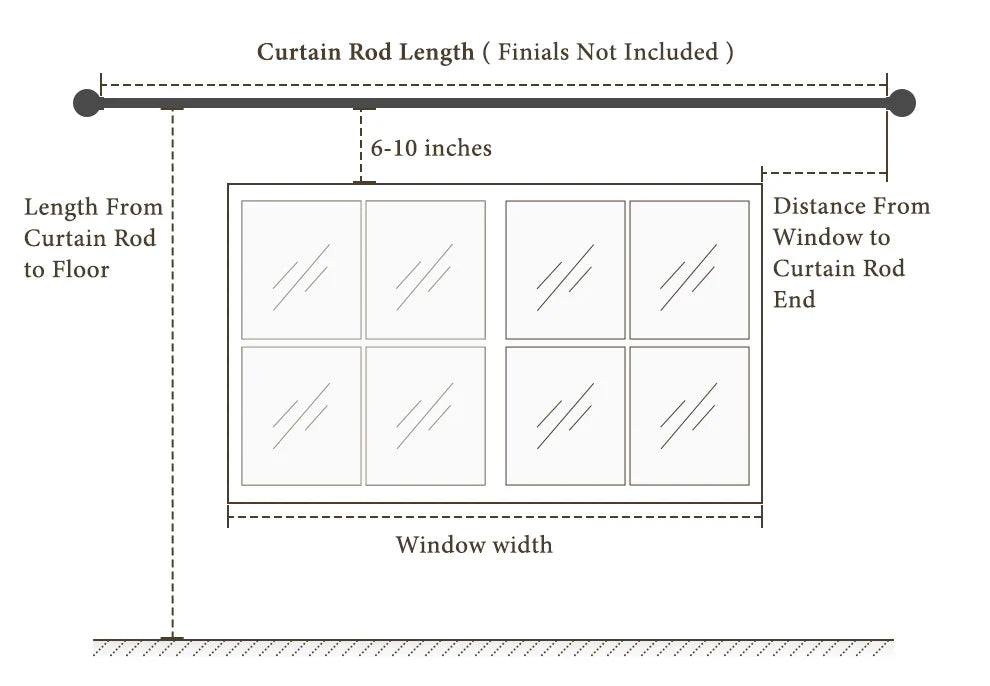
Step 2: Know Verilcurtain's Standard Fullness
To prevent your drapes from looking flat like a stretched sheet, it’s important to consider adding fullness for extra width.
Pleated Styles
The fabric’s fullness is already factored into the design. We use 150-200% fabric fullness to create the pleats, ensuring the curtains have a rich and luxurious appearance.
- 1.5x Fullness for pinch pleat, tailored pleat, inverted pleat, and goblet styles.
- 2x Fullness for triple pleat and triple tailored pleat styles.
This means you don’t need to add extra width for fullness—it’s already incorporated into the curtain-making process. Just choose the width you want.
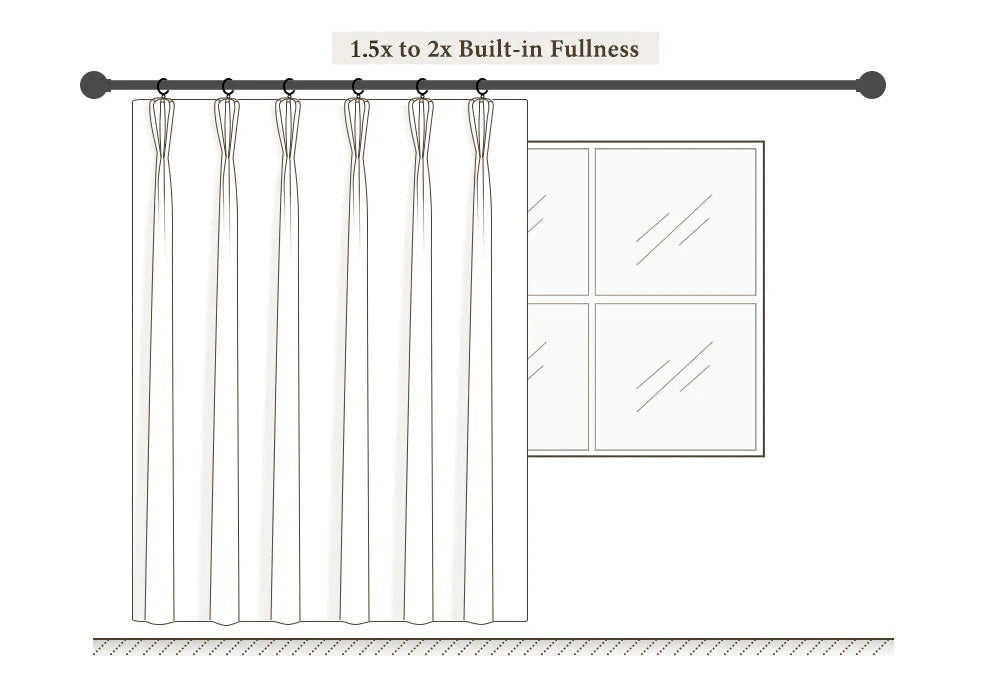
Step 3: Determine The Width And Length of The Curtains
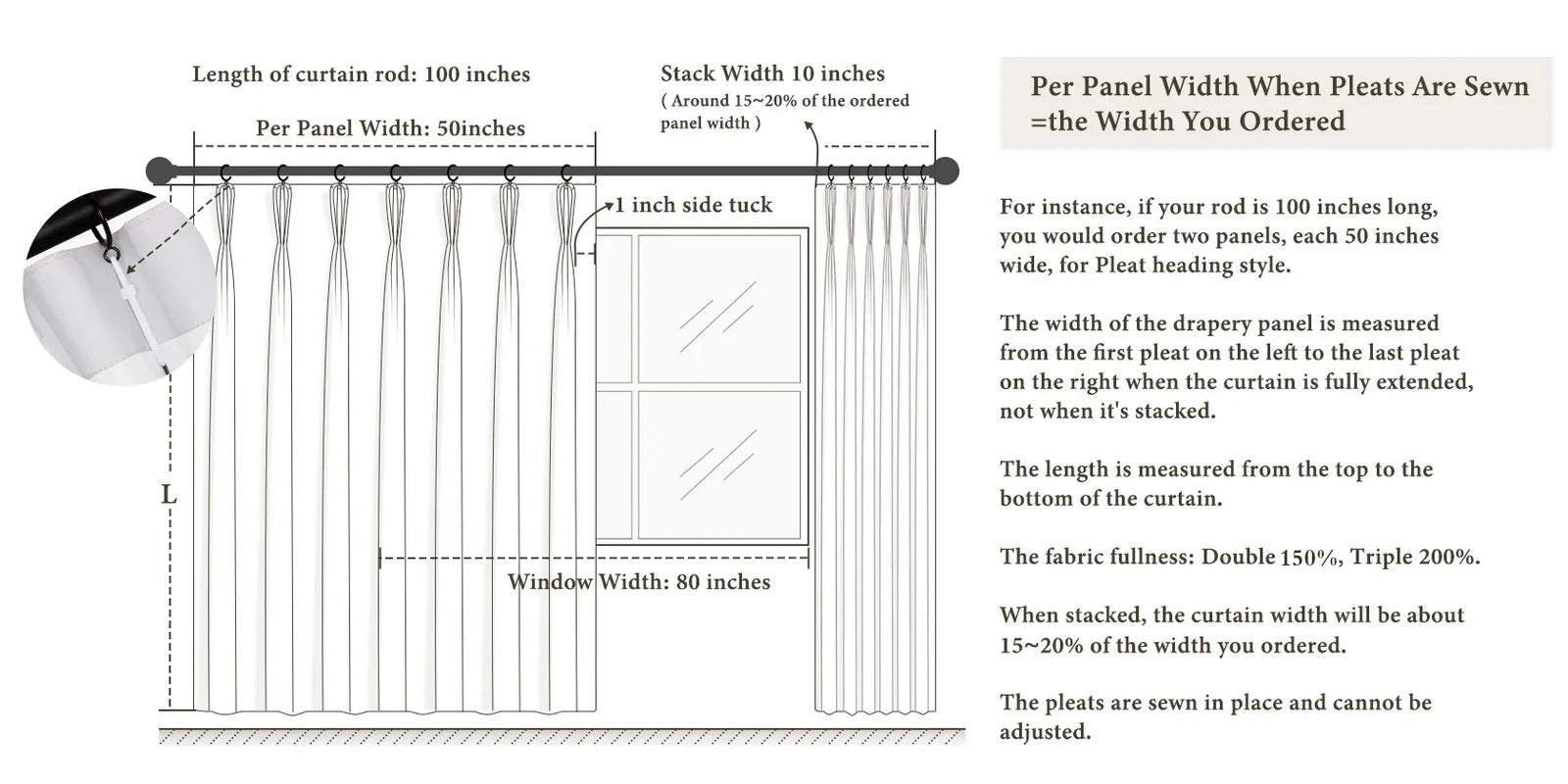
For Soft Top & Grommet Heading Style
The default fullness is set at 100%, but for drapes, you should aim for a fullness of 150-200% of the final measured width. A 150% fullness will give a more tailored look, while 200% fullness, which is recommended, will create a richer, more luxurious appearance. Here's a quick guide on recommended fullness:
- 1.5 times of the curtain rod length is a moderate gather.
- 2 times of the curtain rod length is a standard gather.
You'll need to choose the fullness ratio based on the type of header you're using. Additionally, you'll need to determine how many panels are necessary to achieve your desired fullness, as the fullness ratio can vary depending on the header style.
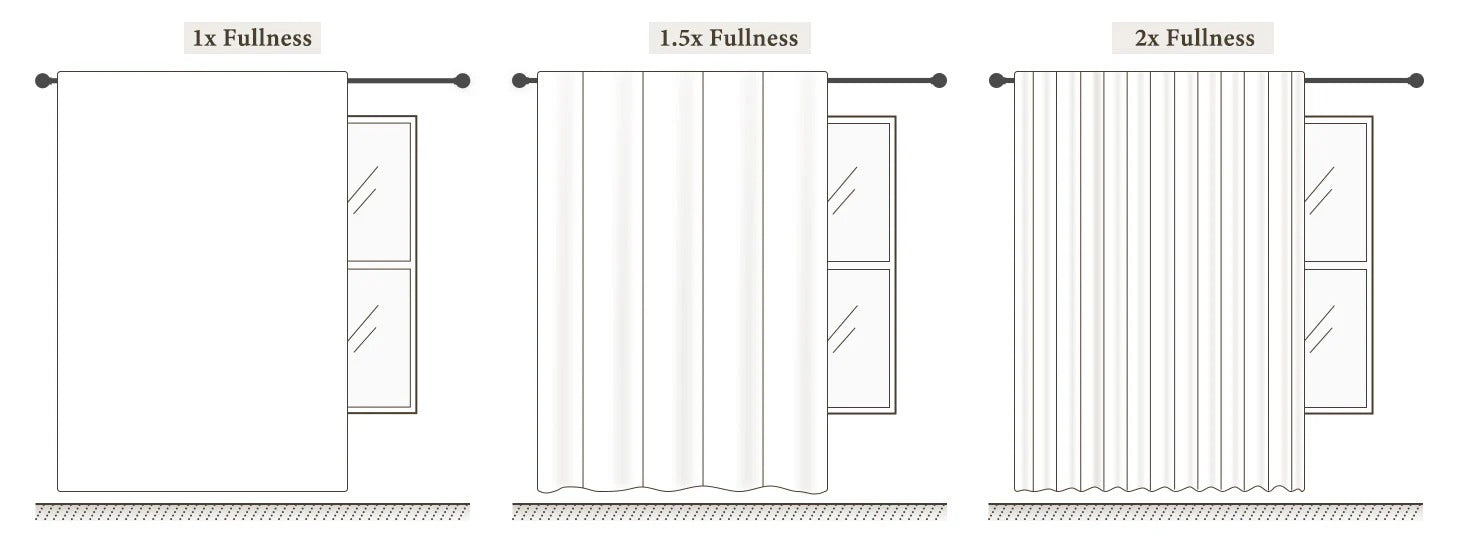
Soft Top
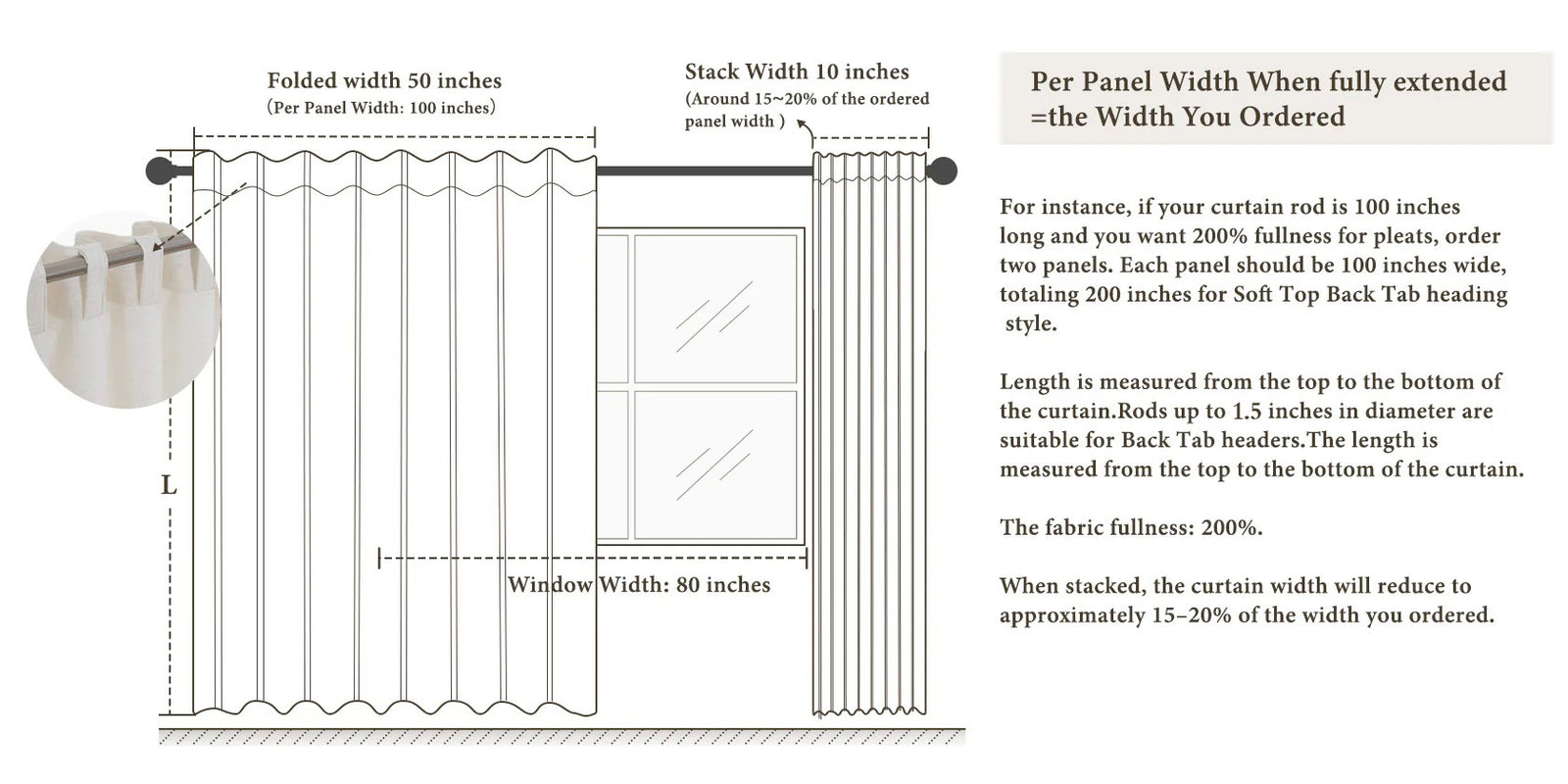
Grommet
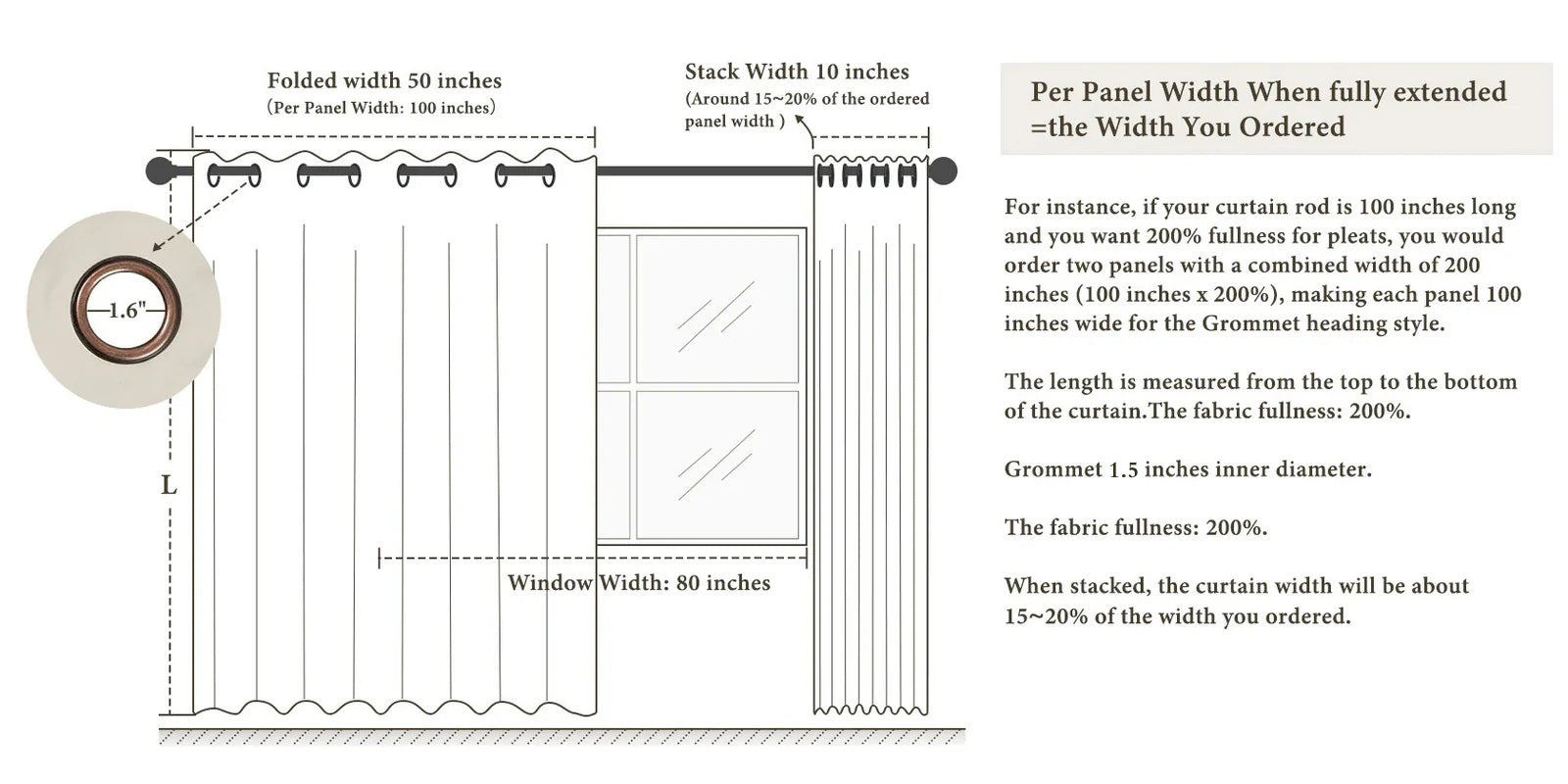
Determine The Width of Curtains
- For Pleated Heading Style, Per Panel Width = Curtain Rod or Track Full Length / Panel Quantity
- For Soft Top Heading Style, Per Panel Width = (Curtain Rod or Track Full Length x 200% Fullness) / Panel Quantity
- For Grommet Heading Style, Per Panel Width = (Curtain Rod or Track Full Length x 200% Fullness) / Panel Quantity
Finding The Perfect Fit
Different lengths of curtains will give the room a different visual experience.
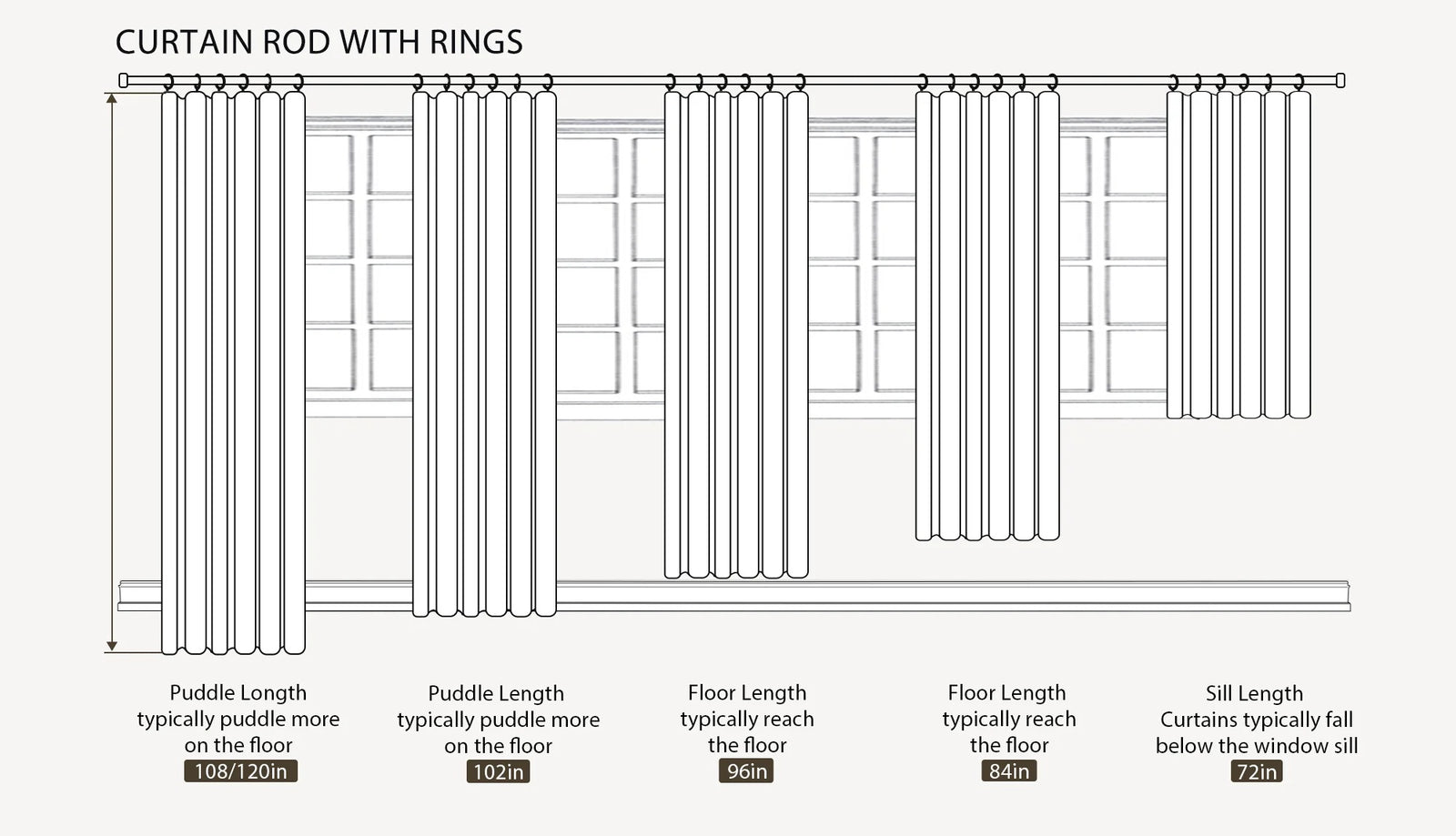
Tips
- Your customized curtains will be made to the exact width and length you specify.
- Heading styles include French Pleat, Triple French Pleat, Tailor Pleat, Triple Tailor Pleat, and Flat Hooks, all of which come with adjustable hooks and rings.
- Both width and length are measured with a steel tape measure and accurate to within 1 inch.
- Be sure to measure each window and doorway individually.
- Perceptions of fullness vary. Some may prefer a looser drape, while others may want a fuller, more gathered look. When choosing a fullness factor, consider your personal taste and the desired look for your space.
This guide offers recommendations and advice but does not cover all possible scenarios. For more complex measurements and additional advice, feel free to email us at support@veilcurtain.com



